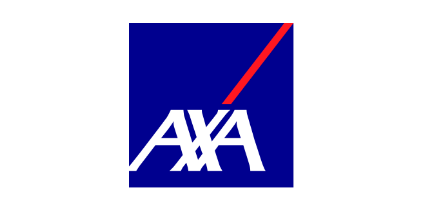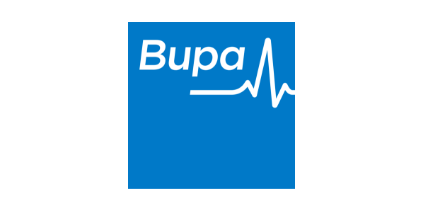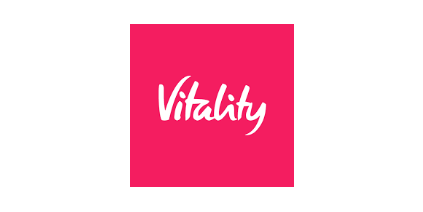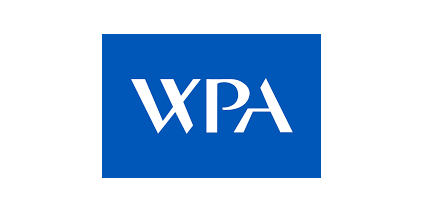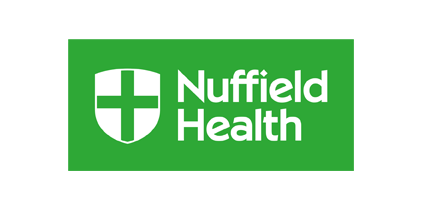FAQs
Answers to some frequently asked questions are given below. If you have a diagnosis or if you will be undergoing a particular operation you may find the answer to your question on the hand, wrist or elbow condition specific pages. If the answer to your question cannot be found please submit your question via the online enquiry form on the Contact page and we will endeavour to reply as soon as possible.
Referrals are welcomed from other healthcare professionals such as your GP, physiotherapist or other specialist. We also take self referred patients.
Contact page as well as through the Alexandra Hospital and Manchester Spire Hospital.
NHS patients will need a GP referral to the Hand Unit at Salford Royal.
Private patients are seen at the Alexandra Hospital in Cheshire or the Manchester Spire Hospital in Didsbury.
NHS patients are see in Salford Royal Hand Unit.
Private patients are usually seen within 1-2 days. Emergency consultations for acute injuries and sports professionals may be seen the same day at an additional cost.
Please bring your referral letter, if this has not been sent directly. Please also bring with you details of your insurance policy and authorisation codes.
The consultation is tailored to your condition. There is plenty of time to allow for a thorough history, examination and comprehensive discussion of the management options. In general, new patient consultations last 20-30 minutes, follow-up consultations last 10-15 minutes. If more time is required, Mr Naqui will endeavour to allow for this.
Self-pay new consultations are usually £250-300. Self-pay, follow-up consultation fees are £190*
*Correct as of June 2013.
Mr Naqui is recognised as a provider by all the leading insurance companies. The costs of consultations sit within the guidelines and are usually covered by your insurer. In a few cases there may be an ‘excess’ that your policy requires you to pay. Please Contact the secretary for any further assistance.
Often, further imaging (X-ray/scan) may be required to confirm the diagnosis. X-rays are usually performed on the day and covered by your policy. Scans such as CT (computed tomography), US (ultrasound) and MRI (magnetic resonance imaging) are specialised and may require you to re-attend. Mr Naqui will request this for you. You will often need an authorisation code from your insurer.
Ultrasound scans are useful for detecting lumps such as ganglions as well as looking at tendons and ligaments in real time.
A bit of jelly is applied to your hand and a probe is placed upon it. Ultrasound uses sound waves to image soft tissue structures such as muscles, tendons and ligaments. A probe that emits sound waves is applied to your hand with some coupling jelly and an image is displayed in real time on a greyscale monitor. Ultrasound is a very safe technique and can provide important information on the integrity of the soft tissues as well as identify changes in blood flow and the presence of any fluid around joints.
CT scans are really useful for looking at bones, joints and fractures in great detail.
Computed tomography (CT) uses x-rays to provide cross-sectional images. In particular, it can provide highly detailed assessment of the bones. As a patient you will lie still within the “donut” ring scanner, whilst it rotates around your arm to construct images. The scan usually lasts a few minutes.
An MRI scan uses no radiation and is a highly sophisticated scan. It is really useful to look at the lining of joints in your hand and wrist, the blood supply of the bones, blood vessels, nerves, tendons and fracture healing.
Magnetic resonance imaging (MRI) uses the magnetic properties of water in your body to provide images. Radiowaves, which are highly safe, are used to construct the images. MRI provides highly detailed information about the soft tissues such as the muscles, tendons, ligaments and the joint surfaces. The imaging parameters can be modified to provide optimal images depending upon the clinical problem you may be suffering with. The MRI scanner itself is shaped like a tunnel. Usually, you will be required to place your arm within the scanner and remain very still whilst the scan is performed. Sometimes the scans can last up to an hour but will depend upon the reason for the scan. It may be necessary to give you an injection of contrast before the scan to give better images. There may be reasons why you are unsuitable to receive contrast, which will be discussed with you on the day. Additionally some patients are unable to have MRI scans since they are claustrophobic or they have metallic implants such as a pacemaker, cochlear implant, brain aneurysm clips or shrapnel. Before having the scan these aspects will be checked with you in the form of a questionnaire.
If you suffer from nerve entrapment such as Carpal or Cubital Tunnel Syndrome, you will usually need a nerve conduction study. Mr Naqui will request this for you. You will often need an authorisation code.
Mr Naqui will only offer you surgery if it’s the best course of action for your condition and situation.
Non-operative options, if applicable, are always outlined and offered in the first instance. A recommendation for surgery with an explanation of the technique, the benefits and risks involved will be outlined. If you wish to go ahead for surgery, a date will be offered in the clinic or by Mr Naqui’s secretary.
Consent is the formal process undertaken to ensure that the decision for surgery has been allowed sufficient time and discussion between patient and surgeon. This includes a discussion of all other options available, the steps in the procedure offered, the benefits and the risks. Mr Naqui will ensure sufficient time and discussion is offered before undertaking surgery. A copy of the consent process will be given to you and one copy retained in your records.
Surgery is planned around you. Depending on the nature of your surgery this could be anything from 3 days onwards.
Each operation or procedure has a unique OPCS code. For example, the OPCS code for a wrist arthroscopy procedure is W8602. You will need to inform your insurer of this code to obtain authorisation. Mr Naqui will provide you with this code.
If I need an operation:
Zaf specialises in minimally invasive procedures within the hand. This includes Wrist Arthroscopy and Dupuytren’s fasciotomy.
Please bring with you your regular medications if you take any. You may wish to bring a book or laptop to pass your time although newspapers and journals are provided. If you are staying overnight, you may wish to bring your own wash bag and toiletries.
Mr Naqui will do your surgery. For major or complex procedures, he may be assisted by another experienced surgeon. There will be no additional charge incurred if this is the case.
Operation times can vary between 15 minutes and 2 and a half hours depending on the nature of the procedure. Mr Naqui will inform you of the estimated duration of your procedure at the time of your consultation. Please review the hand, wrist or elbow conditions pages for information specific to your condition.
Mr Naqui will discuss the anaesthetic options during your consultation. The choice of anaesthetic will be a combined decision with yourself. Local anaesthetic (LA) involves administering a solution within the hand, numbing the site of surgery. This is a very safe and effective method and patients remain awake without feeling any pain. Regional anaesthetic (Block) involves numbing the whole arm. This is very useful for longer procedures and the patient can remain awake throughout without any pain. General anaesthetic (GA) involves being asleep. Towards the end of the procedure local anaesthetic may be administered into the site of surgery to aid pain relief. Mr Naqui works with specially trained anaesthetists who are experts in delivering regional anaesthetic (blocks), which are extremely effective and popular for nearly all hand procedures. The decision to opt for regional or general anaesthesia will be discussed in detail with you by the anaesthetist, on the day of surgery.
WALANT means ‘Wide-Awake-Local-Anaesthetic-No-Tourniquet’. It is a technique originally popularised in Canada that has gained world wide acceptance. In essence, procedures that used to be done using other forms of anaesthetic, such as general anaesthesia now have surgery wide awake under local anaesthesia and without the need for a tourniquet. It has many benefits including patients not needing to be put to sleep, pain relief during and after surgery, being able to move your hand and talk to your surgeon during the operation (you will not see the surgery). Mr Naqui is proficient in WALANT surgery and has published several research articles regarding this.
Nearly all procedures are ‘Day Case’ meaning that you will be able to go home the same day of your procedure. In certain circumstances, for example due to pre-existing medical conditions or social circumstances you may need to stay overnight (In-Patient admission).
All most all procedures are ‘Day Case’ meaning that you will be able to go home the same day of your procedure. In certain circumstances, for example due to pre-existing medical conditions or social circumstances you may need to stay overnight (In-Patient admission).
Mr Naqui will see you after your operation to ensure you are comfortable and feel ok. Mr Naqui will arrange your post-operative care plan. This includes seeing his hand therapist for dressing adjustments and therapy. This is usually within 7 days of surgery. Mr Naqui will also arrange your follow-up appointment with him before you leave. This is usually within 2 -3 weeks of the surgery or earlier if necessary.
The aim is for you to be completely free of pain immediately following your operation. After sometime the local or regional anaesthetic will wear off. You will be advised to take simple pain-killers before you go to sleep that night and for the following 2 days regularly.
Mr Naqui will give you clear instructions regarding your dressing. In general, you are not advised to remove your dressing yourself. Either Mr Naqui or his therapist will change your dressing at your next appointment.
There are ways of keeping your splint clean and dry! We can provide you with specialised plastic sheeting. Mr Naqui and his therapist will take you through the options.
Some swelling after surgery is expected, particularly if the hand is not elevated or the fingers are not moved. This may result in your dressing feeling a little tight. Keeping your hand elevated and moving your fingers are important to help reduce swelling. Whilst the tightness and swelling maybe very temporary, it is advised that you get in touch with Mr Naqui’s hand therapist via the Contact page if this is not resolving.
This will depend upon your condition and the type of work you do. Mr Naqui’s will discuss this with you. For an outline please see the list of hand and wrist conditions.
This will depend upon your condition. Mr Naqui will discuss this with you. In general try and plan not to drive before your first follow-up appointment.
Please get in touch with Mr Naqui hand therapist via the Contact page.
Hand and Upper Limb surgery is typically very safe, although complications are possible in any form of surgery. The risks of surgery will have been discussed in the consent process – see Consent FAQ above. Risks specific to conditions are discussed in the hand, wrist and elbow conditions pages. Mr Naqui and his team pay close attention to you before, during and after surgery. This will help to minimise the risks of surgery. You will be provided with a hospital phone number should you wish to speak to the team post-operatively in case of emergency.
